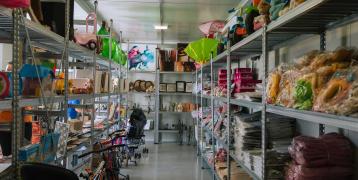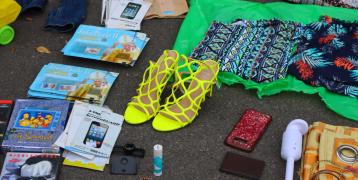Behaviour change to drive reuse and repair

In January 2023, the Policy Learning Platform organised an online workshop on reuse and repair in the circular economy.
The event focused on behavioural change and local value creation through reuse and repair with keynote presentations by rreuse and Behaven.
To complement the knowledge shared in the event, Fred Dorsimont, Managing Director of Behaven, explores in this article the role of behavioural science in driving reuse and repair.
Behaviour change is essential
A sustainable world is not possible without sustainable behaviours. Technical, economic, and legislative solutions are necessary, but they must be reinforced and completed by behaviour change solutions.
For instance, providing information or incentives may not be sufficient to influence sustainable behaviours if it does not consider human factors such as acceptance or habits.
Including for the circular economy
The circular economy is reliant on people’s behaviour as much as technical and economic elements. From purchasing to end-of-life, people’s behaviours dictate the success of a circular program.
Circular behaviours include:
- investing in more durable products,
- maintaining owned products,
- repairing functional products,
- proper disposal of products with no reuse potential,
- returning instead of stockpiling.
Solutions such as financial incentives and information campaigns are not enough to sufficiently influence these behaviours.
Barriers to circular behaviours
To understand what influences behaviour, Behaven works with a scientific model that divides behavioural influences into three categories: individual, contextual, and social.
Contextual refers to the influence of the moment and place, social to the influence of others, and individual to the influence of conscious and unconscious factors such as intentions and cognitive biases respectively.
To properly understand what might prevent or facilitate the adoption of circular behaviours, we need to understand all of these factors, not just some of them.
Some examples of factors influencing circular behaviours include lack of awareness, trust, access, convenience, and habits. Habits are particularly important because they are automatic and unconscious behaviours that people do without thinking.
We now have more tools
The Rainbow WheelTM, Behaven’s database of 60+ behavioural interventions specific to sustainability, is an example of a toolbox to encourage circular behaviours.
Many circular behaviours require repeated actions which in turn requires habit formation.
For instance, giving individuals prompts and feedback to engage in a circular behaviour can help create a habit around it. Co-creating with both stakeholders and the target audience is critical to remove barriers, changing habits, and bypassing cognitive biases.
Additionally, it is essential to test behavioural interventions to evaluate their effectiveness and refine them based on data.
To summarise
While technical factors, such as infrastructure and technology, are crucial to the success of circular programs, human factors play an equally significant role. The behaviours of consumers and stakeholders can make or break a circular program. The good news is that behavioural science can help both understand and influence these factors.
By understanding the human factors that influence circular behaviours, you can intentionally and knowingly design circular programs that are more likely to succeed.
Relevant Policy Learning Platform resources

Reuse and repair in a circular and social economy
The linear ‘take, make, use, and dispose’ economy is driving the climate emergency.
Reuse and repair in the circular economy
Explore the key learnings, presentations and recording of our reuse and repair online workshop that took place in January 2023.
More about the author
Fred Dorsimont is the Co-founder & Managing Director of Behaven, a behavioural science consultancy that helps European organisations understand and change people’s behaviour to ensure the success of their sustainability programmes.
